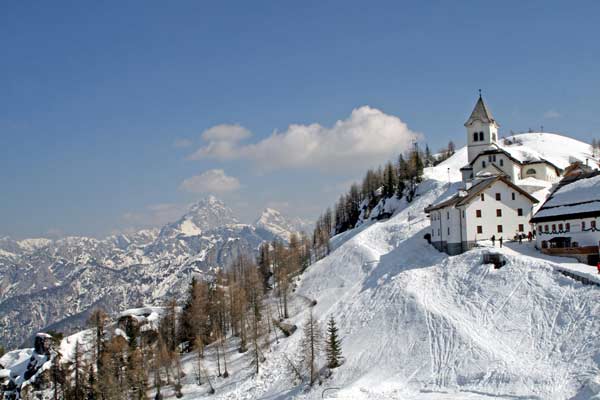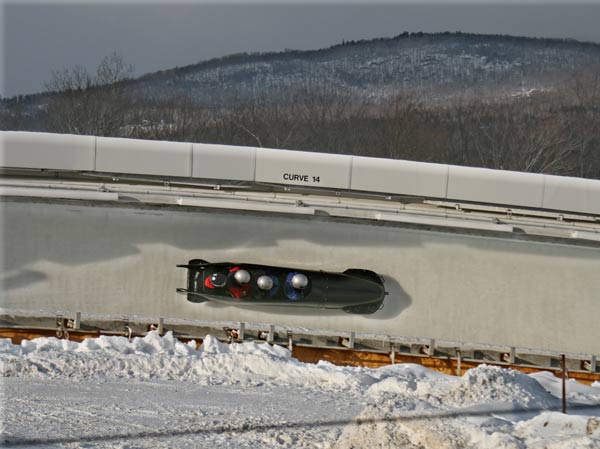
By Carl Valle
Every four years the winter Olympics reminds us that while the summer version may get more love and attention, some freaky monsters in bobsled exist, and their training is one of the most beloved for American football and other power sports. The sport is very pure and the name of the game is speed everywhere, from how fast you push the sled to the end time being how effective the pilot managed the speed they acquired from the push by reducing mistakes in steering. I have spent a few years helping some of the athletes on the National and Development team in the United States Squad, and each year many athletes come out to test their abilities with their own combine, one of the most demanding power assessments on the planet. Not only are athletes tested like the NFL combine on speed and jump tests, they are evaluated in the weight room, a vital way to test the durability of athletes hitting speeds faster than your local highway. Perhaps you are an athlete that loves training and competition and need a second chance in elite sport, or you are curious what the monsters of ice do in training, we will review what the key areas that make successful bobsledders and why we should praise these athletes for what they do.

A Little History of the Bobsled
The bobsled isn’t a new sport, and after a hundred years of evolution it went from something recreational to an elite event that requires world class speed. Started in St. Moritz, Switzerland, the sport expanded beyond the European countries to all continents and is truly international now that one can see Brazil and Australia competing. Most of the success is with powerhouses from Germany and the Swiss, but America based on medal count is always near the top and won gold in the last Olympics. One can participate with a two man option or four man option, and women currently have the two competitor option available now. Many of the advancements have come from the technology of the sleds, but like any sport, the athletes have evolved as well. Usually athletes come from sports like rugby or track and field, and the long off-season is where these athletes make improvements in size, speed, and strength. The bobsled tracks are like concrete water slides covered with ice, hurling athletes at over 125 km/h and some curves feeling like jet plane. The sleds are a not very heavy and have blade skates on them, but when four 220 pound beasts are jumping in the weight provides added speed down the track.

Sprinting on Ice
In the article How much do track spikes improve times in the sprints? I shared a video of someone running upright on ice without spikes to explain how spikes work at different parts of the race, but in the bobsled, an event that success is highly dictated by acceleration, brush spikes matter for obvious reasons. The ice has very little friction and in order to overcome inertia, athletes customize their own spikes by adding a brush like addition. Many strength coaches look at the total end weight of the sled an assume that training with a prowler with heavy loads is the secret, but the weight is only after the push is completed and the key is a great running start, not maximal power. When it comes down to it, the ability to be heavy and fast, with the durability to take the punishment of going down a track that feels like championship knockout fight, is the name of the game. Technique in pushing is not to be taken lightly as several coaches exist to mange the development of technique in order to take advantage of the athlete’s potential.
Freaks of nature such as Herschel Walker, Werner Gunthor, and current track stars like Lolo Jones and Lauryn Williams have used their gifts on loan for their respective national teams. Speed kills, and in this case with bobsled, speed and enough size make the difference, especially with brakemen, those that do the main pushing outside the pilot who is in the front.
Have You Got What it Takes?
Each summer and early fall the national team in the US holds a combine for the best speed and power athletes and they perform an array of tests similar to the LSU evaluation mentioned by Boo Schexnayder in his last interview. Athletes are assessed with speed tests raining from 15-60 m and include jumps, throws, and lifts as well. What is different with the testing is that a point system exists, and one can see their abilities ranked. Like the NFL combine, the testing for speed is again different, since the the timing gates are not placed immediately next to the athlete, and from the times posted, one can’t compare track times or splits to bobsled. Posted on the federation website, USA Bobsled Skeleton Federation Combine Scoring Table the explanation of the timing is clearly stated and explained in detail.
All Sprints should be conducted on a track surface and must be measured by a laser or infrared timing system. To start, athletes must have at least one foot within one meter of the first timing eye (heel on one meter line). The first timing eye should be 15 inches off the ground while the rest of the timing eyes should be set up at least 36 inches from the ground. – USBSF Combine Testing Protocol
Anyone reading that can see how that is a running start and can’t be compared to track and field splits in the 100m dash. Also the body type of a bobsled athlete is not the same as a sleek sprinter such as Usain Bolt or Carl Lewis, and most bobsled athletes simply are not designed for anything beyond 50 meters as they intentionally add mass to give them functional weight and the build to help produce starting speed. Take a look at Steve Langton and Kevin Kuske, those bodies are not designed to do 200m repeated but to ensure their squad is being pushed hard for 40 meters.
The reason that athletes develop later in their athletic careers in the bobsleigh is because they have very long off-seasons, likely the longest of all sports. This makes training very impotent as each athlete is expected to continually improve to make their team better. During the season is a different scenario, where athletes are flying to different time zones and will compete in several countries in North America and Europe. Athletes still maintain fitness and size over the few months leading up to the different championships such as the World Cup and Olympic games. A long international winter circuit, basically unpaid, is very difficult decision and many sacrifices are made. I have worked with many athletes who had the talent but didn’t have the mindset to be focused and resilient in a sport with so little glory and attention. Still the sport is growing and sponsors are interested in the event, making the life of a bobsledder a real choice for athletes looking to put their bodies to the test.
Please share this article so others may benefit.
[mashshare]

